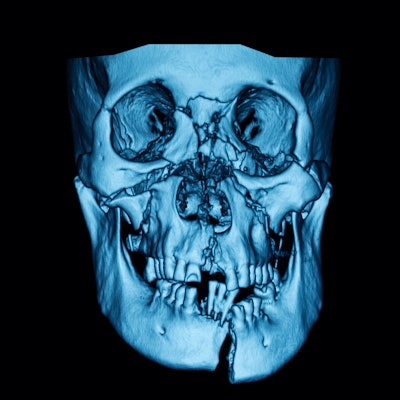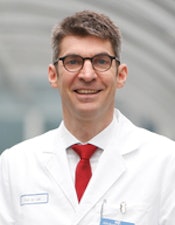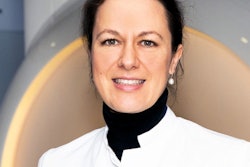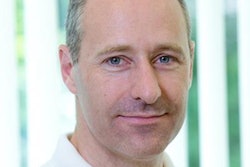
Prof. Dr. Michael Lell is head of radiology and nuclear medicine at the Nuremberg Clinic. In an interview with the German Röntgen Society (Deutsche Röntgengesellschaft, DRG), he talks about his experiences as a radiologist on night duty and gives younger colleagues tips on how to best deal with challenging situations.
Q: What is the proportion of night patients with injuries resulting from fights or accidents?
 Prof. Dr. Michael Lell. Photo courtesy of the DRG and the Nuremberg Clinic.
Prof. Dr. Michael Lell. Photo courtesy of the DRG and the Nuremberg Clinic.A: In the morning meeting, we see several cases from the previous night. These are traffic accidents and multiple trauma patients and comprise mostly injuries to the midface, the nasal bone, the orbital bone, and the skull. Fortunately, we are much less likely to see injuries to the soft tissue of the neck and larynx. The causes range from falling out of bed or falling in the bathroom to cases of domestic violence or public brawls.
COVID-19 and the associated social restrictions such as the curfew, alcohol ban in public spaces, cancellation of concerts and sporting events, etc., have led to a significant decline in such injuries. For CT examinations of the midface on night duty, the decrease for us has been around 35%.
Q: What kind of injured people come to your clinic at night?
A: It's a mixed bag. Of course, the patients who fall are mostly older people. For obvious reasons, Corona has no influence on frequency within this group. We see a broad age spectrum in physical disputes, ranging from adolescents to older adults. Managing the injured, who often arrive with their relatives or friends, is more difficult than the actual imaging. The technologists, who are in direct contact with the sometimes aggressive patient or relatives, are on the front line.
Unfortunately, there has been a very unpleasant trend toward aggression directed at employees in recent years. With the introduction of security personnel, targeted deescalation training, structural changes, etc., targeted steps have been taken to improve the safety of employees.
Q: What examinations do the injured undergo?
A: These are often a combination of an ultrasound examination and a CT examination of the midface, skull, spine or neck, and depending on the trauma, also of the thorax or the abdomen.
Q: When it comes to radiological care for the injured, time certainly plays a role. How does this factor determine your work as a radiologist?
A: In larger hospitals, immediate diagnosis is implemented across the board. Every image is assessed radiologically immediately after it is taken. There are always certain delays when the radiologist is busy with an ultrasound examination or a CT scan.
Q: Caring for the injured is also an interdisciplinary effort. With which medical specialties does radiology work in particular?
A: On night duty, this is primarily with the emergency room team. The better the communication between the two departments, the faster and more reliable it is to assess the examinations. The most important point, however, is the direct contact between the radiologist and the patient! A short personal history or examination clarify a lot of questions.
Q: To what extent is radiology involved in follow-up care?
A: Further treatment is usually carried out on an outpatient basis, so we rarely see the patients for follow-up.
Q: In the context of your experience what are the greatest challenges for radiologists on night duty?
A: During the first night shift, the familiar suddenly looks unfamiliar and there is no immediate feedback from the medical manager. Then you start to wonder: "Is that a fracture or is it just a vascular canal or a suture?" The decision you make usually has a direct effect on therapy. That means you leave your comfort zone and have to take responsibility. But the excitement soon subsides as you become more experienced.
Another area in which you have to develop skills is your own time management. In addition to the primary task of diagnostics, there are telephone calls from colleagues on the wards, or in the emergency room, to get everything they need to know from you. Imaging in the emergency room and especially the "emergency room CT" is a particular stress factor. There is also, for example, the management of the drunk or intoxicated patient, as mentioned above.
Q: What advice would you give to colleagues who are working on night shift for the first time?
A: Keep calm, focus on the person you are currently treating, trust your abilities and, especially at the beginning of your service, do not be afraid to seek advice.
At the Nuremberg Clinic, we have developed a system in which young colleagues are introduced to services slowly and in stages. In addition, we have the advantage that with the two locations there is always another on-duty radiologist on site. The imaging service can of course always be reached by phone and there is the option of accessing the PACS from home via secure access.
Editor's note: This is an edited translation of an article published in German online by the DRG. Translation by Frances Rylands-Monk. To read the original version, go to the DRG website.



















